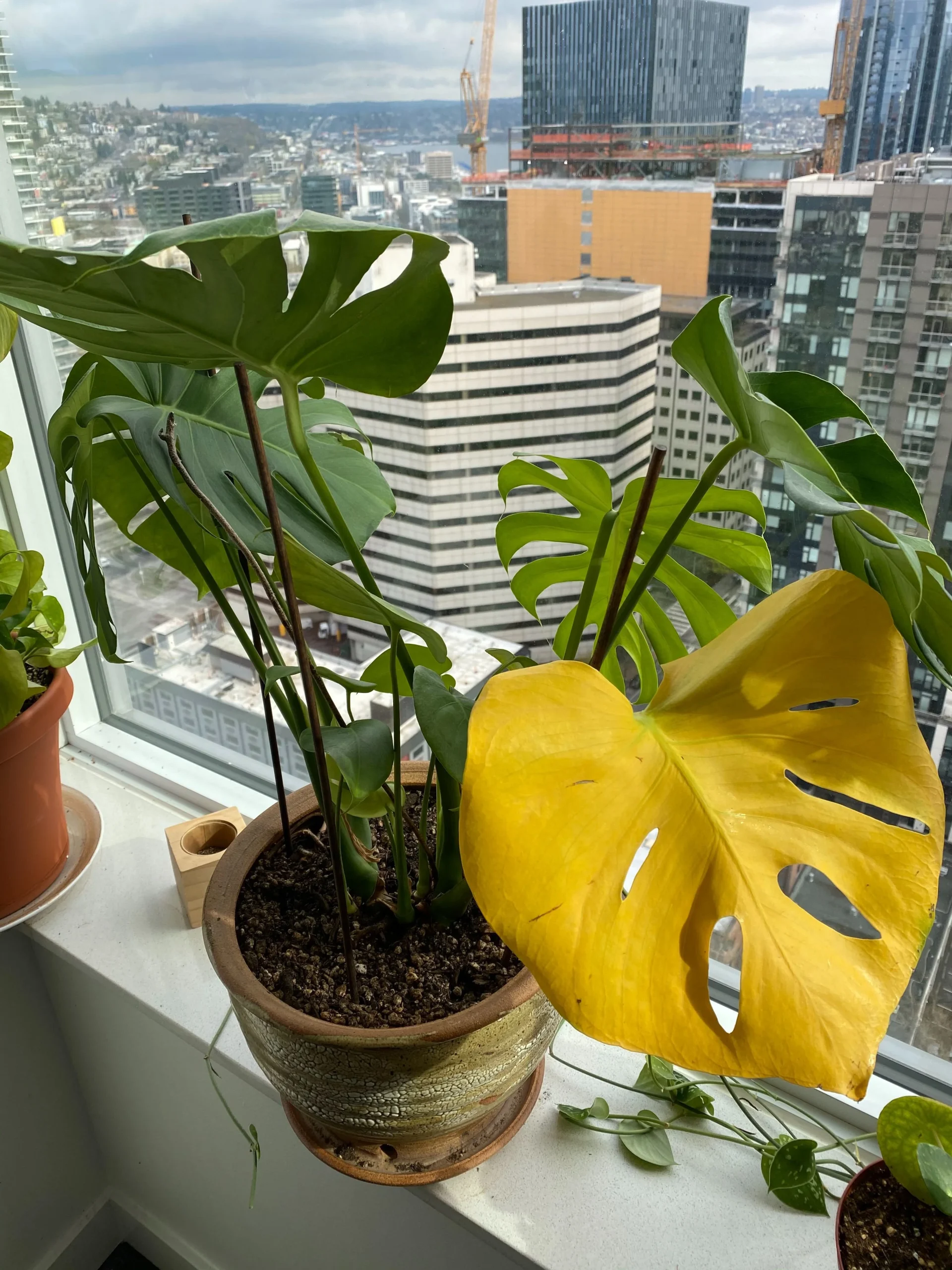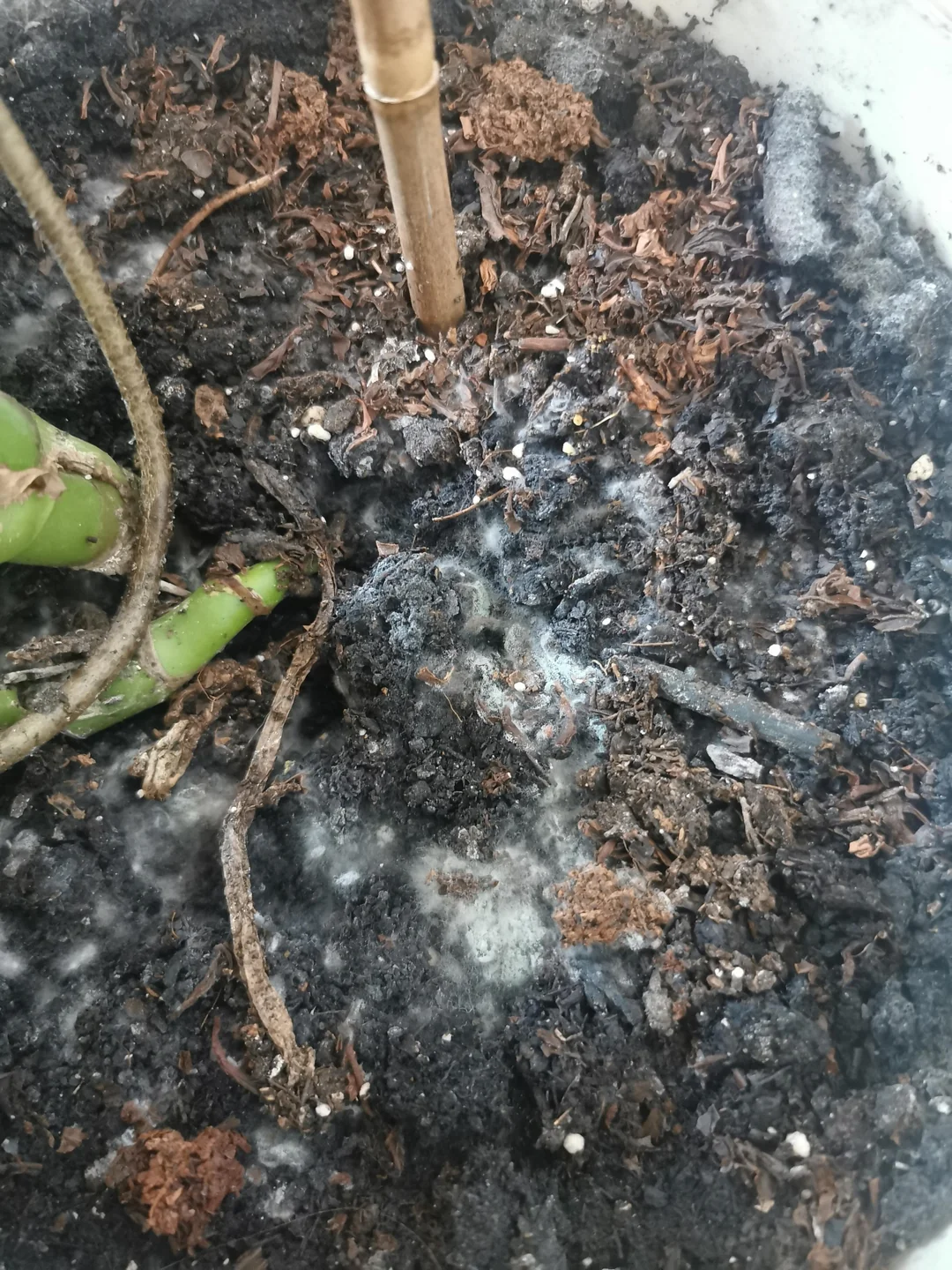Monstera plants, also known as Swiss cheese plants, are popular houseplants known for their large, glossy leaves with signature holes. While they can make a stunning addition to any home, some people wonder if these plants can actually cause harm.
Overwatering can lead to root rot
What causes overwatering?
Overwatering a monstera plant typically happens when the plant’s soil stays wet for too long. This can occur due to a few common mistakes:
- Watering too frequently, such as daily or every couple days. Monsteras prefer to dry out a bit between waterings.
- Using a soil mix that retains too much moisture, like standard potting mix. Monsteras do best in loose, well-draining soil.
- Not having adequate drainage holes at the bottom of the pot to allow excess moisture to escape.
- Leaving the plant in a decorative pot or planter without drainage holes at the bottom. This prevents excess moisture from properly draining out.

Root rot symptoms
If your monstera plant sits in wet soil for too long, the roots can begin to rot. Signs of root rot include:
- Brown, mushy roots with a foul smell. Healthy monstera roots should be firm and white or green.
- Yellowing or browning lower leaves. If the rotting roots cannot properly absorb nutrients and moisture, the plant struggles to transport them to foliage at the top.
- Drooping, limp leaves that fail to firm up after watering. Damaged roots cannot supply the leaves and stems with adequate water.
- Visible fungal growth like white mold on top of the soil or on decaying roots. Pathogens thrive in the excess moisture.
Impacts on the home
An overwatered monstera with severe root rot can definitely cause issues in the home by:
- Spreading fungal spores into indoor air that can aggravate allergies and asthma
- Creating foul odors from decaying plant matter
- Attracting fungus gnats if fungal growth occurs in the potting mix
- Dripping excess water that can promote mold growth nearby
So proper watering technique is crucial for keeping your monstera healthy!
Pest issues can get out of hand
Common monstera pests
There are a few common bugs and pests that can infest monstera plants:
Mealybugs – Small white insects that cluster along stems and leaves. They secrete a sticky substance called honeydew that leads to mold growth.
Scale insects – Immobile pests that encrust themselves onto plant parts to feed on sap. They also secrete honeydew.
Spider mites – Tiny pests that create webs and suck cell contents from leaves. This causes stippling damage and bronzing.
Fungus gnats – Small flying insects that lay eggs in damp potting mix. Their larvae then feed on plant roots and can spread fungal diseases.
Join the Monstera Variegated trend – shop now and be in style!

Letting pests spread
If pests like mealybugs, fungus gnats, or mites reproduce and spread unchecked on your monstera, it can definitely cause issues by:
- Spreading to nearby houseplants and creating an indoor infestation
- Secreting sticky honeydew that coats surfaces and leads to mold growth
- Causing extensive leaf and root damage that negatively impacts plant health
- Some pests like fungus gnats emerging as adults and flying around rooms
So properly identifying and treating any pests early is crucial for limiting harm! Rotation insecticides or neem oil can help eliminate them.
Toxicity concerns are often exaggerated
Is monstera truly toxic?
There is a common belief that monstera plants are highly toxic to people and pets. However, this tends to be exaggerated. All plant parts do contain insoluble calcium oxalate crystals that can cause mild irritation or swelling if chewed/ingested. The level of toxins is considered quite low though and the irritation is rarely serious.
Limited risks to people
For people, the main risks of monstera toxicity come from:
- Getting sap in the eyes from pruning that can cause temporary vision irritation
- Children or pets tasting or biting leaves out of curiosity and experiencing mouth swelling or upset stomach
Unless someone deliberately eats significant quantities of a monstera plant, it rarely causes serious harm to humans.
Impacts on pets
Pets like dogs and cats face slightly higher risks since they may be drawn to nibble on or play with the attractive large monstera leaves. However, most will quickly learn to avoid it after experiencing initial mouth irritation. Ensure pets have plenty of appropriate, alternative plants or toys to satisfy curiosity and redirect interest away from the monstera. Trim and locate it safely out of reach if needed.
So while monstera does contain some toxins, the danger is quite minimal with proper care.
Mold growth from excess moisture
Causes of moldy soil
If you fail to properly water your monstera plant and end up with perpetually soggy soil, mold growth can occur. This most commonly happens due to:
- Overwatering without letting soil dry adequately between waterings
- Having a pot without drainage holes that allows moisture to pool in the bottom
- Using a dense soil mix that stays overly damp for too long
- Not pouring out excess water that collects in drip trays or decorative cache pots without holes
Any of these can lead to mold formation on the soil, pot rim, or drainage tray.

Impacts on indoor air
If your monstera plant develops mold growth due to excess moisture, it can definitely contribute to indoor air quality issues by:
- Releasing mold spores that flow to other areas of the home
- Triggering respiratory issues like worsening asthma or allergies
- Creating a generally damp environment conducive to additional household mold issues
So preventing moisture-loving mold from colonizing an indoor monstera’s potting mix is important for health. Letting soil dry out adequately between waterings and providing proper drainage are key!
Aggressive climbing growth
Ideal growing conditions
In their natural tropical habitat, monstera plants love heat, abundant moisture, and tropical storms that distribute their seeds for reproduction. They aggressively climb up trees and structures with their strong aerial roots and can reach astonishing size given proper conditions.
Even indoor monsteras in temperate homes can display substantial growth when cared for well. Providing the following encourages vigorous climbing:
- Warm room temperatures between 65-85°F
- Decent light from sunny windows or plant lights
- Regular but careful watering as needed
- Occasional fertilizing in the growing season
- Support structures like moss poles or trellises for aerial roots to adhere to
With such conditions, they aim impressive height rapidly!
Managing growth indoors
If left totally uncontrolled, a vigorously growing monstera can potentially cause indoor issues like:
- Blocking sunlight from windows as it rapidly climbs support structures
- Producing huge leaves that knock over and damage nearby items
- Developing thick climbing stems that damage wall surfaces
- Dropping leaves and debris that collect messily around the base
So it’s smart to prune back aggressively growing stems, train aerial roots carefully along supports, trim older leaves judiciously, and locate monsteras where ample space exists as needed. Managing climbing growth prevents harm while still promoting plant health.
Conclusion
While monsteras certainly can present some risks for indoor spaces if neglected or left uncontrolled, these potential harms are quite preventable with proper care tactics. By choosing monstera variety size appropriately, providing ideal growing conditions without excess moisture, controlling pests promptly, and pruning back rampant growth, you can safely enjoy their natural tropical beauty at home. With the right balance of effort, monsteras pose far more beauty benefits than harm!

